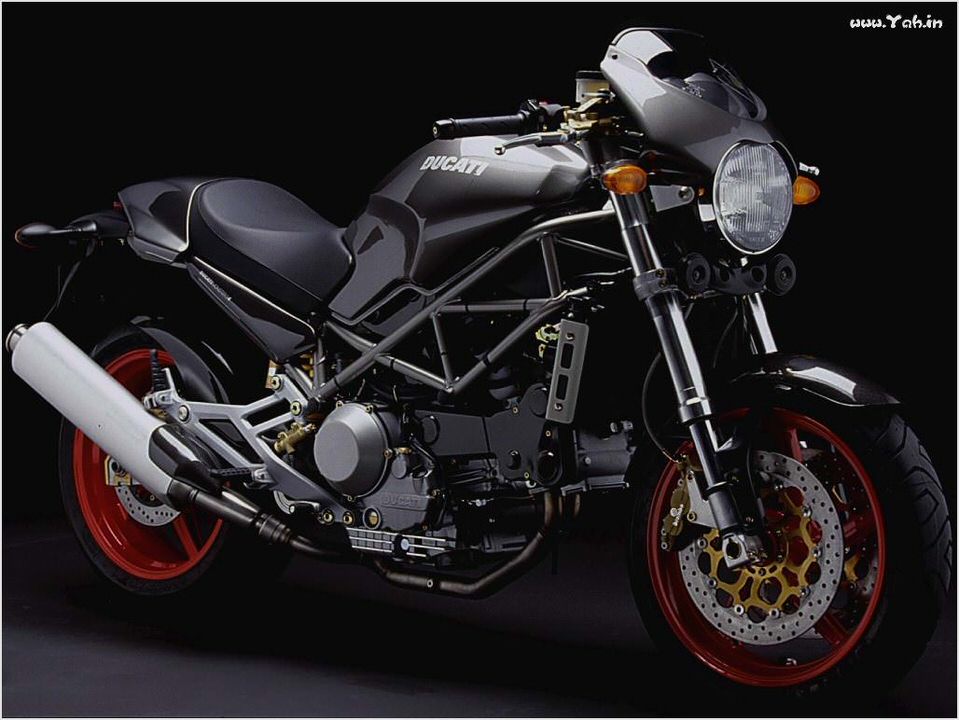
The new S4 Fogarty, truly an instant classic, is a tribute to the amazing career of a four-time WSBK champion.
A singular bike for the most discerning enthusiasts.
State-of-the-art components and accessories transform a standard M S4 into a true collectible and missile on the track.
Within the M.Y. 2002 Monster range, the Monster S4 has a story of its own. The MS4 represents an extreme EVOlution and refinement of the Monster concept-a concept that scores of enthusiasts around the world have come to admire and respect.
To put is simply, the Monster S4 is not a variant of the Monster 900 Special, but an entirely new motorcycle with an entirely new mission.
However, because of the layout of components, technical content, overall performance and rational approach, the Monster S4 has remained true to the original Monster styling concept.
In order to define each detail in the most rational and accurate way, Ducati used for the first time advanced Unigraphics software for computerized 3D modeling. Such highly sophisticated computer technology enabled accurate structural and functional testing prior to the construction of the operating prototype. As a result, development time was dramatically reduced and the project was totally optimized before implementation.
The Monster S4 stems from a perfect symbiosis of the robust ST4 frame, the 916 cc Desmoquattro twin-cylinder engine with modified head and lowered exhaust cam and a new rear suspension with a aluminum swingarm, which was sized to obtain a 1440 mm wheelbase.
It turns out 101 Hp, with 66.5 ft. lbs. peak torque and an extraordinary output curve throughout an incredibly broad rpm range.
The Monster S4 Fogarty not only offers unbelievable acceleration and pickup, with its lean 414 lbs. but also unprecedented handling. It sits 20 mm higher than other Monsters in order to provide the ground clearance needed for road riders using its astonishing cornering ability to its fullest.
Review
Let face it, even back in 1993, when the 900 cc Ducati Monster was unveiled, there was nothing monstrous about the 80 horsepower that the old air-cooled mill produced. Even back then, dinosaurs like GSX-Rs, FZRs and ZX-11s roamed planet earth, and the name Monster seemed a bit presumptuous to say the least. Nevertheless, the not-so-aptly named bike turned out to be Ducati’s salvation.
Tens of thousands of Monsters in various displacements became a Ducati staple and opened new markets for a factory that has always been identified with uncompromising hyper-sport torture racks.
The story of the original Monster is nothing short of a miracle. One day, a young designer named Miguel Galuzzi started to play with a left over 888 frame, a big front headlight from the backyard parts bin, and a clay modeled gas tank. That first prototype was something that Ducati’s management just couldn’t – or wouldn’t – approve of.
But the Argentinian-Italian designer was onto something. It looked ugly enough to be called Monster but it was a captivating bike with rugged, street-fighter looks.
We’ve always had a soft sport for Ducati’s Monster. The swap to a 916 motor only makes our yearning for the bike even stronger.
Amazingly, the original bike from ’93 has made it into the new millennium without major changes in it’s eight year life, save for the introduction of digital fuel injection last season. But new kids on the block like Triumph’s Speed Triple, Cagiva’s Raptor 1000 and Honda’s X1 started to cast menacing shadows over the under-powered Monster. It wasn’t a moment too early to slot the 916’s water-cooled power unit into the Monster.
The heart transplant has required quite few changes in the frame. Most notable to the naked eye is the sturdy new swing arm that incorporates a totally different rear suspension linkage. It looks just like the one on the ST4 tourer, but with the rear cylinder’s exhaust pipe routed right through it. Rests of the changes simply makes room for the different dimensions of the engine and a higher seat.
To further distinguish the S4 from its lower siblings, the bike is packed with shiny carbon fiber parts. Front and rear mud guards, cam belt covers, side panels and silencer protectors play games with the sunlight and make you feel like a Stealth Bomber pilot. A factory-mounted bikini fairing, rear seat cowling and red wheels set the S4 farther apart.
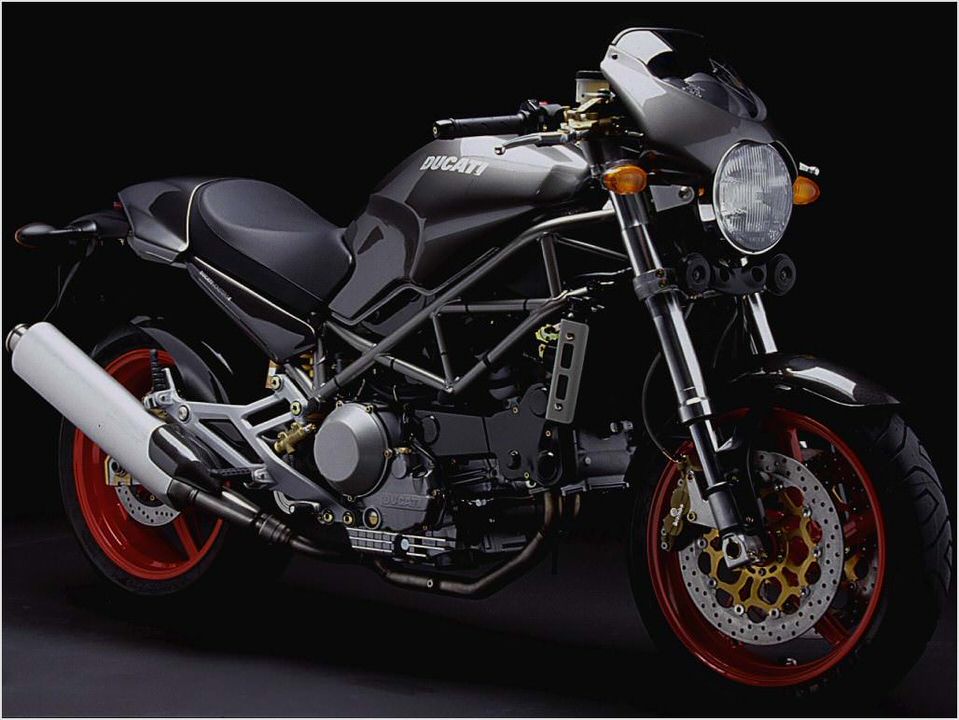
As impressive as all these parts are, there are still a few unpleasing, out of place details. The cheap looking mirrors don’t belong here. Then, the left-hand side-mounted water pump is a bit of a sore thumb, sticking out notably from the frame’s smooth plane.
Ditto for the lower, black rubber water pipe that goes from the pump to the radiator. Just make sure to park your S4 next to a wall when possible.
The engine itself has been detuned from its original Superbike state to better match the requirements of street-fighting. Milder cams bump the torque curve towards the midrange and, of course, slash top end power somewhat. Other than that, little has been changed in the basic power unit that brought Ducati quite a few WSBK championships and, indeed, the feeling of exhibiting this fine piece of engineering all over town is very satisfying.
Italy is quite full of Monsters, but at the stop lights you can see other Ducati owners casting envious looks on the S4’s race-bred engine. Thankfully, in the case of the S4, there is substance behind the pose and it is really the power that grabs your immediate attention. One hundred or so horses at the rear wheel might not sound that much nowadays, but coupled with the shorter gearing of the S4, this easily supplies superb acceleration.
From 4,000 rpm onwards, the S4 flies into the rev limiter at 9,500 with ease, catapulting the rider into the 100-plus mph range with a force that the old monster could only dream about. No less impressive than the acceleration is the fluidity and smoothness of the 916 mill. Compared to the old unit, the new one gets the job done with much less fuss and clattering.
Sure, the trademark rattle of the dry clutch is still there, but that’s about it.
Thankfully, there is a definite improvement in the ergonomics too. My memories of the old model where of a seat that was too low and foot pegs that were too high. The new Monster has gained more than an inch in seat height and my knees did not have to bend to race replica angles.
The founders of Ducati sure knew where to build their factory. The amazing and hilly playground of Tuscany begins at Bologna and that’s where I decided to head towards upon picking the bike at the factory. As impressive as the engine is, on these mountain roads, there is still something that I don’t like about the handling.
Steering is very precise and stable, but the bike seems to squat down on its rear end too much, giving an uneasy feeling when pitching it into turns. This also creates a bit of under-steer during the exits. Later on, I decided to check the suspension settings only to discover that they’re way off.
Front preload was way too high and at the rear was just the opposite. I had been riding with at least one degree more rake than planned and the rear suspension damping was at 8 instead of 16. Somebody has been trying to turn the bike into a chopper!
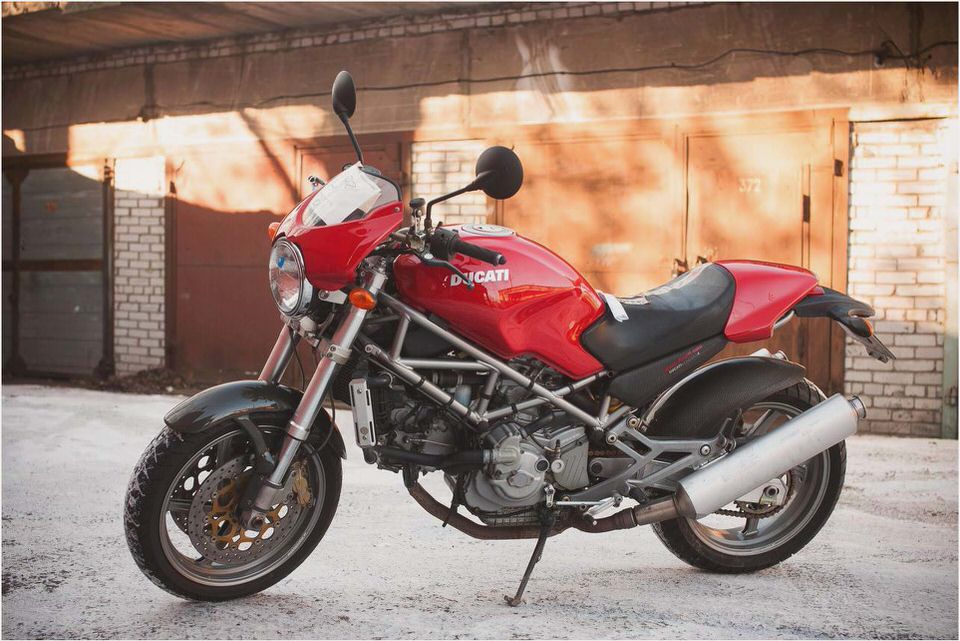

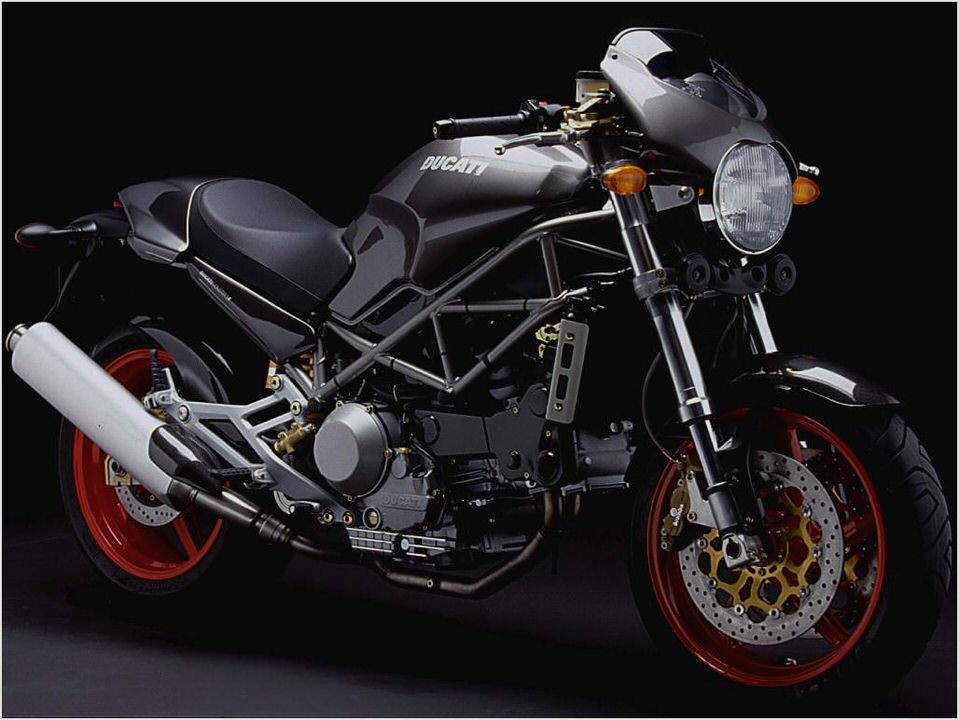
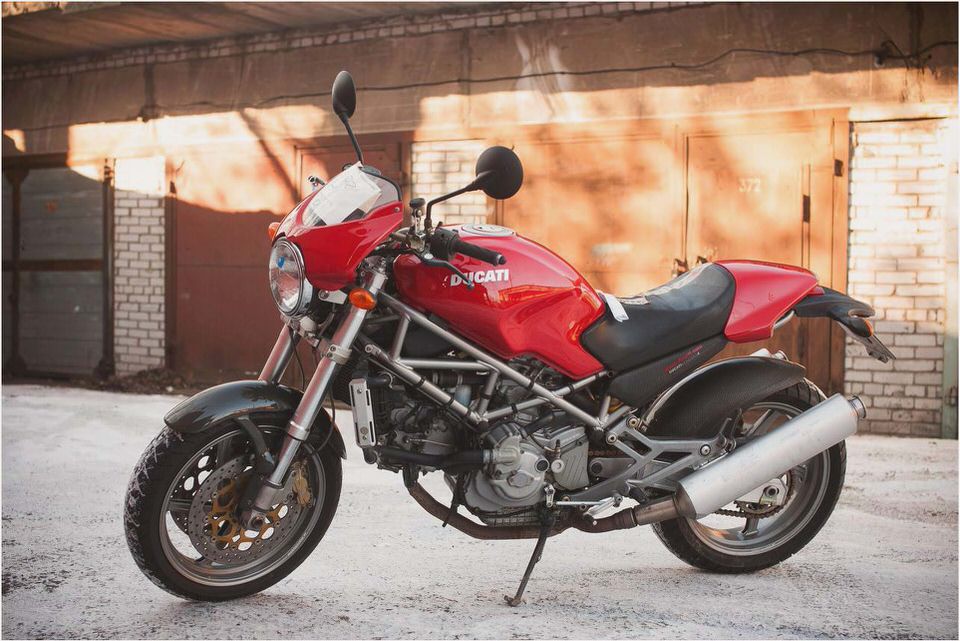
- Ducati bevel spares uk – Forest Paintings
- Track Day Hero: 2000 Ducati 748 RS Rare SportBikes For Sale
- OneWheelDrive.Net 2010 Ducati Hypermotard 796 Launch Review
- 2009 Alfa Romeo 147 Ducati Corse Price, Specs & More RSportsCars.com
- Ducati scrambler: ducati scrambler 250 ducati scrambler 350

